
Kalanchoe millotii - Succulent Plant
(MRP Inclusive of all taxes)
- Shipping ₹79 for entire order
- Dispatch in 7 days
- Country of origin: India

(MRP Inclusive of all taxes)
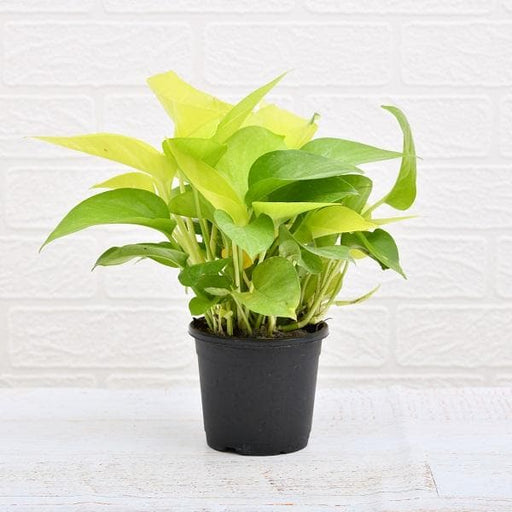 Save 29%
Save 29%
Air Purifier Money Plant with Pot The Air Purifier Money Plant, also known as Pothos or Epipremnum aureum, is a stunning indoor plant that...
View full details
 Save up to 15%
Save up to 15%
Peace Lily, Spathiphyllum - Plant The Peace Lily, scientifically known as Spathiphyllum, is a stunning houseplant celebrated for its elegant white...
View full details
 Save 25%
Save 25%
Jasminum sambac, Mogra, Arabian Jasmine - Plant Jasminum sambac, commonly known as Mogra or Arabian Jasmine, is a fragrant flowering plant...
View full details
 Save 18%
Save 18%
Combo Constituents Includes the Parijat Tree (Night-Flowering Jasmine), a culturally significant plant with fragrant flowers. Description The Pari...
View full details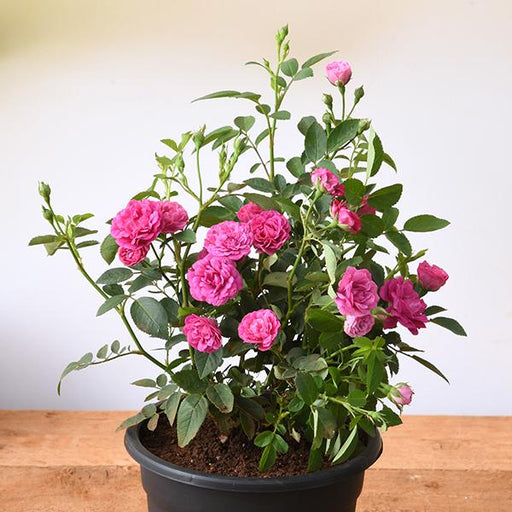
 Save 25%
Save 25%
Miniature Rose, Button Rose (Any Color) - Plant The Miniature Rose, also known as the Button Rose, is a charming and compact flowering plant that ...
View full details Save 25%
Save 25%
Damascus Rose, Scented Rose (Any Color) - Plant The Damascus Rose, also known as Rosa damascena, is a timeless symbol of beauty and romanc...
View full details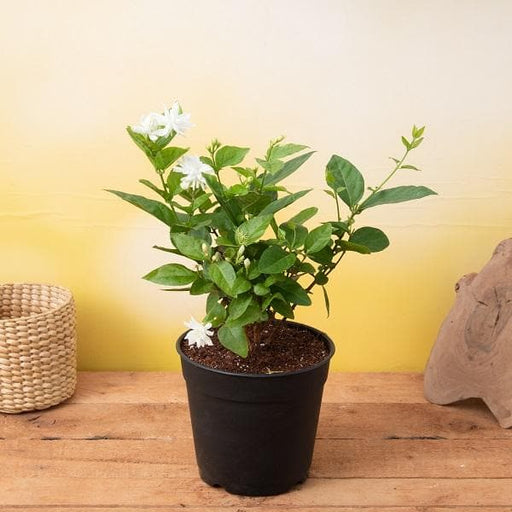
 Save 17%
Save 17%
Beautiful Fragrant Mogra, Arabian Jasmine Plant with Pot The Beautiful Fragrant Mogra, also known as Arabian Jasmine (Jasminum sambac), is...
View full details Save 15%
Save 15%
Pack of Vermicompost and Neem Cake for House Plants Transform your indoor garden with our premium Pack of Vermicompost and Neem Cake, spec...
View full details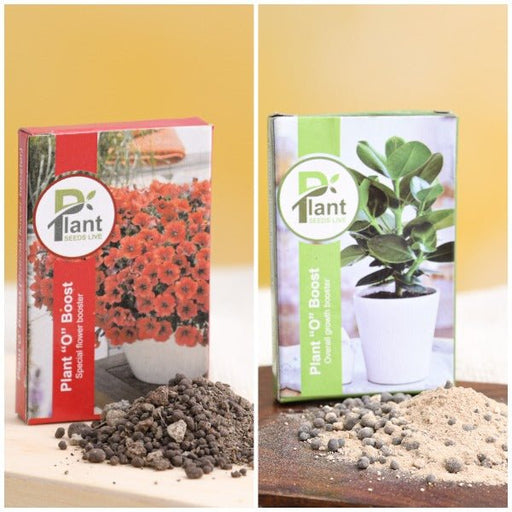
Pack of Plant Growth and Flower Boosters Unlock the full potential of your garden with our Pack of Plant Growth and Flower Boosters! This ...
View full details Save 38%
Save 38%
Combo of Jeevamrut and Neem Raksha for Easy Growth and Protection of Houseplants Transform your indoor garden with our exclusive combo of ...
View full details Save 22%
Save 22%
Plant Nutrients Kit (Pack of 16) for a Healthy Garden Transform your garden into a lush paradise with our Plant Nutrients Kit, featuring 1...
View full details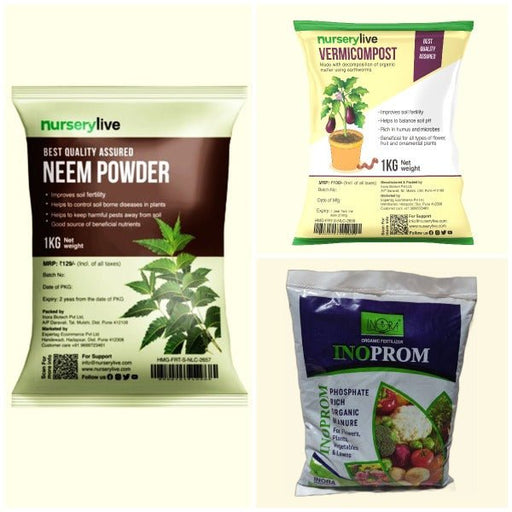 Save 16%
Save 16%
Combo of Top Plant Fertilizers Elevate your gardening game with our exclusive Combo of Top Plant Fertilizers, featuring two bags of premiu...
View full details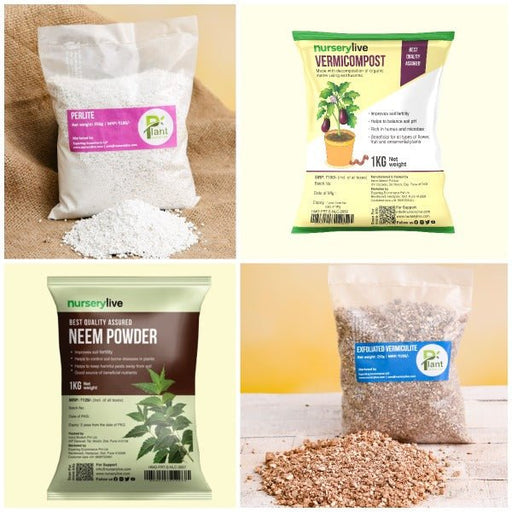 Save 24%
Save 24%
Pack of 4 Additives to Make Soil Healthy and Nutrient Rich Transform your garden into a thriving ecosystem with our Pack of 4 Additives de...
View full details Save 30%
Save 30%
Transform your gardening experience with our premium Combo of Perlite and Vermiculite. This unique blend is designed to enhance soil aeration and ...
View full details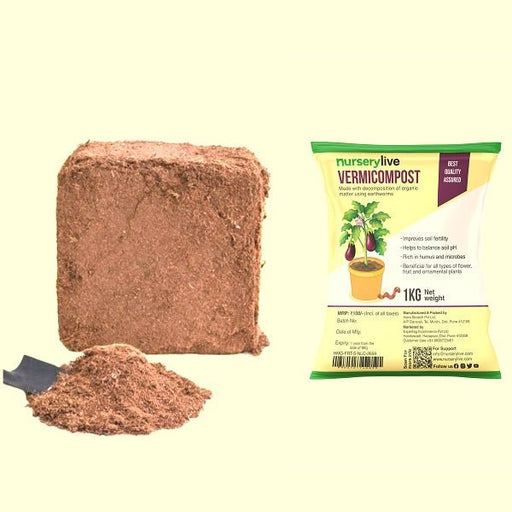 Save 27%
Save 27%
Combo of 2 Vermicompost and Cocopeat - Enrich Your Soil Naturally! Transform your garden into a thriving ecosystem with our Combo of 2 Ver...
View full details
 Save 35%
Save 35%
Best 6 Plants for Perfect Indoor Garden Transform your living space into a lush oasis with our curated collection of the Best 6 Plants for a...
View full details
 Save up to 50%
Save up to 50%
Mini Succulent Garden Pack Transform your space with our Mini Succulent Garden Pack, featuring a delightful collection of 4 any variety beautiful s...
View full details
 Save 30%
Save 30%
5 Best Fragrant Plants Transform your garden or indoor space into a fragrant paradise with our curated selection of the 5 Best Fragrant Plants. Th...
View full details
 Save 24%
Save 24%
Set of 2 Bonsai Looking Grafted Adeniums Transform your indoor or outdoor space with our exquisite Set of 2 Bonsai Looking Grafted Adenium...
View full details Save 45%
Save 45%
Top 4 Die Hard Succulents Pack Transform your indoor or outdoor space with our Top 4 Die Hard Succulents Pack, featuring a curated selecti...
View full details
 Save 30%
Save 30%
5 Best Indoor Plants Pack Transform your living space into a lush oasis with our '5 Best Indoor Plants Pack.' This carefully curated collection fe...
View full details
 Save 25%
Save 25%
Set of 4 Evergreen Air Purifier Plant Pack Transform your indoor space into a lush, green oasis with our Set of 4 Evergreen Air Purifier Pla...
View full details| SrNo | Item Name | Qty |
|---|---|---|
| 2 | Kalanchoe millotii Succulent Plant in 3 inch (8cm) Pot | 1 |
| 3 | 3.3 inch (8 cm) Square Plastic Planter with Rounded Edges (Black) | 1 |
The Kalanchoe millotii, commonly known as the 'Panda Plant,' is a stunning succulent native to Madagascar. This unique plant features thick, fleshy leaves adorned with a soft, velvety texture and a striking silvery-green hue. Its compact growth habit makes it an ideal choice for indoor gardens, terrariums, or as a decorative accent in any space. With its low maintenance requirements and drought tolerance, Kalanchoe millotii is perfect for both novice and experienced plant enthusiasts.
Kalanchoe millotii stands out due to its unique leaf structure and vibrant appearance. The leaves are not only visually appealing but also serve as a water reservoir, allowing the plant to thrive in arid conditions. This succulent is also known for its air-purifying qualities, making it a beneficial addition to your home or office environment.
This succulent is characterized by its distinctive, fuzzy leaves that can grow up to 4 inches long. The Kalanchoe millotii produces small, tubular flowers that bloom in clusters, adding a pop of color to its already attractive foliage. Additionally, it is a resilient plant that can adapt to various light conditions, making it a versatile choice for any indoor setting.
If you think caring for Kalanchoe millotii is like rocket science, think again! This succulent plant tree thrives on neglect, making it the perfect companion for those who forget to water their plants. Just give it a sunny spot, and it’ll reward you with its charming, fuzzy leaves. Water it only when the soil is dry, and you’ll have a happy little succulent that practically begs for your attention—just not too much!
Want to expand your succulent empire? Propagating Kalanchoe millotii is as easy as pie! Snip a healthy leaf or stem, let it callous over for a day, and then plant it in well-draining soil. Before you know it, you’ll have a mini forest of these delightful plants. Just remember, patience is key; good things come to those who wait (and water sparingly).
Sunlight is the secret sauce for Kalanchoe millotii’s happiness. This succulent loves basking in bright, indirect light, so don’t let it get too cozy in the shade. Too much direct sunlight can lead to crispy leaves, and nobody wants that! Think of it as a sunbather who prefers a nice beach umbrella—plenty of light, but not too much heat.
When it comes to soil, Kalanchoe millotii is a bit of a diva. It demands well-draining soil that allows its roots to breathe. A cactus mix or a homemade concoction of potting soil and sand will do the trick. Think of it as giving your plant a luxurious spa treatment—no soggy bottoms allowed!
Watering Kalanchoe millotii is like a game of “how little can I do?” This succulent prefers a “drought and feast” approach. Water it thoroughly, then let the soil dry out completely before the next drink. It’s like a plant version of intermittent fasting—your Kalanchoe will thrive on this schedule, and you’ll feel like a plant whisperer.
Beware of the sneaky pests that might try to crash your Kalanchoe millotii party! Mealybugs and aphids can be a nuisance, but fear not! A gentle spray of insecticidal soap or a cotton swab dipped in alcohol will send them packing. Think of it as your plant’s personal bodyguard—keeping those unwanted guests at bay.
Kalanchoe millotii is a tough cookie when it comes to temperature. It can handle a range from 50°F to 80°F, making it a versatile addition to your plant collection. Just keep it away from frost; this succulent isn’t a fan of chilly weather. It’s like that friend who loves summer but can’t stand the cold—keep them warm and happy!
If you’re lucky, your Kalanchoe millotii might surprise you with a burst of flowers! These little beauties typically bloom in the spring, showcasing clusters of vibrant yellow or orange blooms. It’s like your plant decided to throw a party, and everyone’s invited! Just remember, flowers are a sign of a happy plant, so keep up the good care.
This succulent plant tree isn’t just a pretty face; it can grow up to 3 feet tall! Perfect for those who want a statement piece without the hassle of a full-sized tree. It’s like having a mini tree in your home that doesn’t require raking leaves or trimming branches. Just sit back and enjoy its quirky charm!
should Kalanchoe millotii live indoors or outdoors? The answer is both! This adaptable succulent can thrive in a sunny window or on a patio. Just make sure it gets enough light and protection from harsh weather. It’s like the ultimate social butterfly—happy wherever it goes, as long as it’s not in the dark!
Looking to create a succulent dream team? Kalanchoe millotii pairs beautifully with other drought-tolerant plants like Echeveria and Sedum. They’ll all get along famously, sharing the same watering schedule and love for sunlight. It’s like a plant party where everyone knows how to have a good time without stepping on each other’s toes!
Kalanchoe millotii is a charming succulent plant known for its fuzzy, silvery leaves and vibrant yellow flowers. It’s like the cute cousin of the succulent family, bringing a touch of whimsy to your plant collection. Perfect for those who want a low-maintenance yet eye-catching addition to their home!
Just avoid overwatering, or it might throw a tantrum!
Kalanchoe millotii thrives in well-draining soil, like a succulent-specific mix or a blend of potting soil and sand. It’s like giving your plant a cozy bed that doesn’t get soggy. Remember, soggy soil is a no-go; this plant prefers to keep its roots dry and happy!
Water your Kalanchoe millotii every two to three weeks, allowing the soil to dry out completely between waterings. Think of it as a desert vacation—too much water, and it’ll feel like a soggy sponge! Just keep an eye on it, and it’ll thrive like a true desert diva.
Kalanchoe millotii doesn’t require much fertilizer, but a light feeding during the growing season can boost its charm. Use a diluted, balanced fertilizer every month or so. It’s like giving your plant a little pick-me-up—just don’t overdo it, or it might get a bit too excited!
Absolutely! Kalanchoe millotii is a fantastic indoor plant, thriving in bright, indirect light. It’s like the perfect roommate—low-maintenance and always looking fabulous. Just make sure it has enough light to show off those lovely leaves and flowers, and it’ll be a happy little housemate!
Good news for pet lovers! Kalanchoe millotii is considered mildly toxic to pets if ingested. While it’s not a full-blown villain, it’s best to keep it out of reach of curious paws and noses. Better safe than sorry—your furry friends will thank you for it!
Propagating Kalanchoe millotii is as easy as pie! Simply take a leaf or stem cutting, let it dry for a day, and then plant it in well-draining soil. It’s like giving your plant a chance to make mini-me versions of itself. Just be patient, and soon you’ll have a succulent family reunion!
Kalanchoe millotii can attract pests like mealybugs and aphids, but don’t worry! A gentle wipe with soapy water or neem oil will send them packing. Think of it as a spa day for your plant—refreshing and pest-free! Keep an eye out, and your succulent will stay fabulous.
While Kalanchoe millotii prefers bright, indirect light, it can survive in lower light conditions, but don’t expect a flower show. It’s like a party without music—still nice, but not as lively. If you want it to thrive and bloom, give it the light it craves!
Kalanchoe millotii typically blooms in late winter to early spring, showcasing its cheerful yellow flowers. It’s like a little sunshine burst in your home! To encourage blooming, ensure it gets enough light and a bit of TLC. Your plant will reward you with a floral fiesta that’s hard to resist!